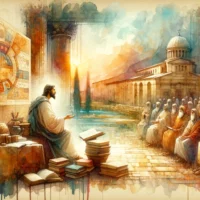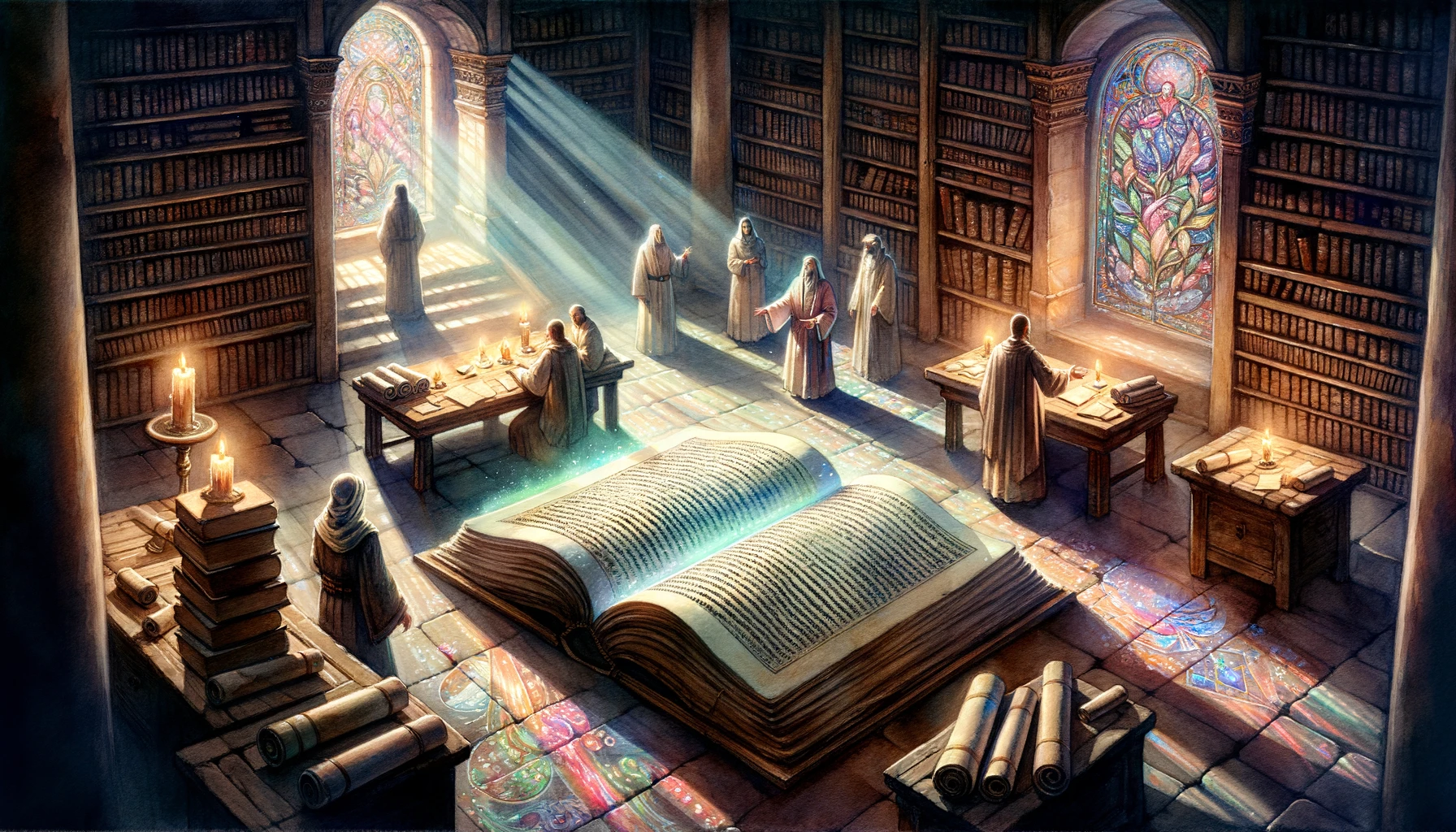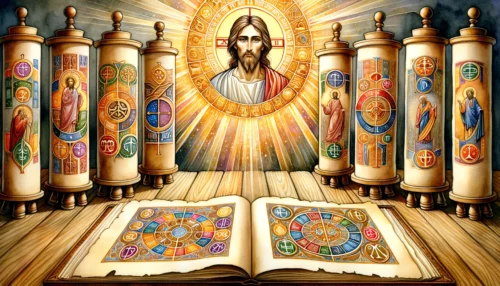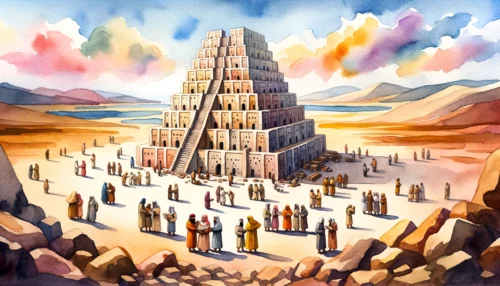When we navigate through the Bible, we often come across the term ‘Apocrypha’, a collection of works that exists in a sort of biblical limbo. These books, while not universally accepted as canonical scripture by all Christian denominations, have nevertheless played a significant role in the development of Christian thought and doctrine. Our exploration will take us to the historical origins of these texts, their content, and the differing perspectives held by various Christian traditions on their place in the sacred canon.
Understanding the Historical Context of the Apocrypha
When talking about the Apocrypha, we are discussing a group of Jewish writings composed between the end of the Old Testament period and the beginning of the New Testament period. The term “apocrypha” comes from a Greek word meaning “hidden” or “secret,” but in the context of biblical literature, it has taken on a more specific meaning.
In the centuries leading up to the birth of Christ, the Jewish people lived under various empires and faced cultural and religious pressures. The apocryphal texts often reflected these experiences and provided wisdom, encouragement, and sometimes historical accounts that helped the Jewish community maintain their faith and identity in the midst of these challenges.
Several of these texts, such as Tobit, Judith, and additions to Daniel and Esther, were written in this intertestamental period and included in the Greek translation of the Jewish Scriptures, known as the Septuagint (LXX). This translation was widely used among Greek-speaking Jews and early Christians, which led to the apocryphal texts gaining some recognition and influence.
One key point in the history of the Apocrypha is the Council of Jamnia, an academic conference of Jewish scholars held around 90 AD. This council was convened, among other reasons, to define the canon of the Jewish Scriptures. This council decided to exclude the apocryphal books from the Jewish canon, mainly because they were not written in Hebrew and were not found in the Jewish Bible.
The early Christian church went through a long process of determining its own canon of scripture, which included the Old Testament. While there was some debate, by the 4th century, many church leaders, like Athanasius and Jerome, were questioning the canonicity of the Apocrypha, even though they acknowledged its value for instruction and edification.
In understanding the historical context of the Apocrypha, it becomes clear that these texts were written during a tumultuous period for the Jewish people, and they offered wisdom and guidance during this time. These texts were included in the widely-used Septuagint and held some influence in the early Christian church. The Jewish Council of Jamnia, however, excluded these texts from the Jewish canon. The debate about the place of these texts in the Christian canon continued for several centuries with significant figures in the church questioning their canonicity, despite recognizing their instructional value.
The Content of the Apocrypha: Books and Themes
The Apocrypha contains a variety of writings that showcase different themes and styles. The books included can vary depending on the tradition, but the most common collection contains 15 books or sections of books. These range from historical narratives to wisdom literature and from prophetic visions to prayers.
Books like 1 and 2 Maccabees are primarily historical, providing accounts of the Jewish revolt against the Seleucid Empire in the 2nd century BC. These texts offer insights into the political, cultural, and religious conflicts of the time.
Wisdom literature such as the Wisdom of Solomon and Sirach (also known as Ecclesiasticus) continue the tradition of Old Testament wisdom literature like Proverbs and Ecclesiastes. They contain instructions for righteous living, exploring topics such as the fear of the Lord, the use of speech, and the pursuit of wisdom.
In addition to these, there are books like Tobit and Judith, which are more story-oriented, featuring tales of faith, endurance, and divine intervention. Tobit, for example, tells a tale of family devotion, angelic intervention, and the virtue of almsgiving.
There are also additions to existing biblical books. These include additions to Esther and Daniel that are found in the Septuagint but not in the Hebrew versions of these books. For instance, the addition to Daniel includes the story of Susanna and the story of Bel and the Dragon.
Baruch, which purports to be written by the secretary of the prophet Jeremiah, offers a message of repentance and hope in the midst of exile. The Letter of Jeremiah, often considered part of Baruch, warns against idolatry.
The Prayer of Manasseh is a heartfelt plea for forgiveness traditionally ascribed to the repentant King Manasseh of Judah. Finally, 1 and 2 Esdras contain visions and dialogues dealing with the challenges of suffering and the hope of the eschaton.
The Apocrypha encompasses various genres and themes. From historical accounts such as 1 and 2 Maccabees, to wisdom literature like the Wisdom of Solomon and Sirach, to more narrative-based books like Tobit and Judith, these texts provide diverse insights. Additions to biblical books like Esther and Daniel, Baruch’s messages of repentance and hope, the Prayer of Manasseh’s plea for forgiveness, and the visionary dialogues of 1 and 2 Esdras all contribute to the rich tapestry of the Apocrypha.
The Apocrypha and Different Christian Traditions
While the term ‘Apocrypha’ is widely used, its application and acceptance differ greatly across Christian traditions. This variance primarily roots in the early stages of Christian history when the canon of Scripture was being established.
Roman Catholic tradition, following the Council of Carthage in the late 4th century and the Council of Trent in the 16th century, recognises the deuterocanonical books – a term used for the Apocrypha meaning ‘second canon’. This tradition includes seven books and additional passages in Esther and Daniel in their Old Testament. It’s worth noting that these decisions came at a time when the Church was under scrutiny, during the Protestant Reformation, and they served to reaffirm the Catholic Church’s authority in defining the canon.
Eastern Orthodox Christians also include these texts in their canon, albeit with some differences. They consider additional texts, like 3 Maccabees, Psalm 151, and the Prayer of Manasseh, as canonical, reflecting their broader view of what constitutes the biblical canon.
Protestants, on the other hand, typically align their Old Testament with the Jewish canon, excluding the Apocrypha. Leaders of the Protestant Reformation, such as Martin Luther, expressed reservations about the apocryphal books. These texts were separated in the Luther Bible and subsequent Protestant Bibles, typically under a section labelled ‘Apocrypha’. It’s noteworthy that these texts are not regarded as false or heretical; rather, they are considered useful for instruction but not for establishing doctrine.
The Anglican tradition holds a middle ground of sorts. The 39 Articles, a foundational document for Anglicanism from the 16th century, states that the Apocrypha is read for example of life and instruction of manners; but not used to establish any doctrine.
The Apocrypha’s place varies within different Christian traditions. Roman Catholic tradition recognises these texts as deuterocanonical, forming part of their Old Testament. Eastern Orthodox Christians also include them in their canon, along with a few additional texts. Protestant traditions, on the contrary, typically separate these texts, considering them instructive but not canonical. Anglicanism treats the Apocrypha as useful for moral instruction, but not for determining doctrine.
Navigating the Uncharted Waters of the Apocrypha
The Apocrypha offers unique insights into the intertestamental period, a time of significant historical, cultural, and religious developments. Its various texts provide a rich tapestry of wisdom, narrative, prophecy, and prayer. The different Christian traditions have distinct perspectives on the Apocrypha’s canonical status, reflecting the diversity within the Christian faith. Our understanding of these texts enhances our comprehension of the historical and cultural backdrop against which the New Testament was written.
To further engage with the Apocrypha, consider these questions:
- How does the historical context of the Apocrypha contribute to understanding the New Testament period?
- What can the wisdom and narrative texts of the Apocrypha teach us about life and faith in times of adversity?
- How does the view of your own Christian tradition towards the Apocrypha inform your understanding of the canon?
In the voyage of faith, every text, every word that connects us to our religious heritage becomes a beacon. Let the Apocrypha, with its unique insights and context, add another dimension to your spiritual growth. Just as the early Christian communities did, we continue to wrestle with our understandings of scripture, inspired by the pursuit of truth, guided by the Holy Spirit, and rooted in our commitment to the risen Christ.














